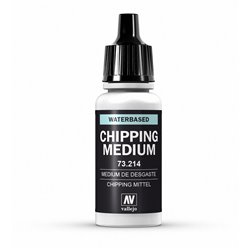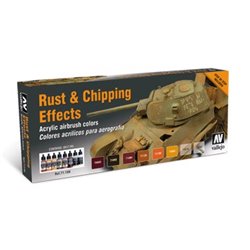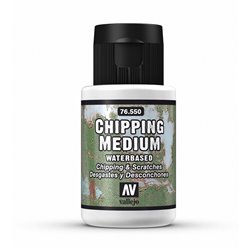Generally, plastic model plane kits do not come with plinths supplied. Nowadays, the majority of kits are designed to...
No products
Product successfully added to your shopping cart
There are 0 items in your cart. There is 1 item in your cart.
Search Tips
Christmas and New Year
We are dispatching orders every weekday apart from Christmas Day, Boxing Day and New Year's Day.
If you order is time critical, select next day delivery at checkout.
The shop in Sandown is closed from 25th December, reopening on 30th December.
What is the hairspray technique for painting?
The hairspray technique is a process used to add chipping effects to the surface of a model, using a can of aerosol hairspray. Unlike other approaches to chipping, such as the foam sponge technique, the hairspray technique looks to release an underlying coat of paint. As such, it is highly desirable to have a view to how this will be achieved before painting is commenced.
The ideal start point is to choose an ideal shade of primer, as it is this colour that will subsequently be exposed by the hairspray technique. Primer is a paint that prepares the model for subsequent coats of paint, specifically it makes it easier for additional paint to adhere to the model. Additionally, it is much tougher and resilient than the additional coats that are to be applied and it is this robustness that we will count on for the effectiveness of the technique. Primer generally dries quite quickly but is good practice to leave it for 24 hours before applying additional coats as this will allow it time to thoroughly cure.
Once dried and cured we can then apply the hairspray. This should be sprayed directly from the can in a light and even coat, ensuring that the whole surface is sufficiently covered. If necessary, additional light coats of hairspray can be applied to ensure a complete and even coverage. Ideally this should be given 5-6 hours to dry before applying the required paint scheme. It is important to use only water soluble acrylic based paint for any additional coats.
Once the acrylic paint has been allowed to dry we can now wet it with tap water applied with a brush, or a light coating can also be applied via an airbrush. The water will activate the paint, making it more amenable to removal. We can now selectively remove the paint via a number of simple tools, such as a toothbrush, a firm bristled brush or via a toothpick. The hairspray previously applied has protected the underlying primer by offering some degree of waterproofing. Effectively, the acrylic topcoat is able to sit on the hairspray but with weaker adhesion. Thus, when we apply water and our chipping tools we can easily remove the topcoat exposing the underlying primer which is effectively protected.
Click here to receive the tips weekly in your mailbox. You can unsubscribe at any time.










